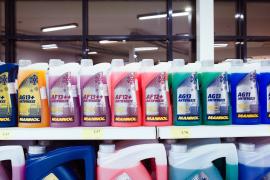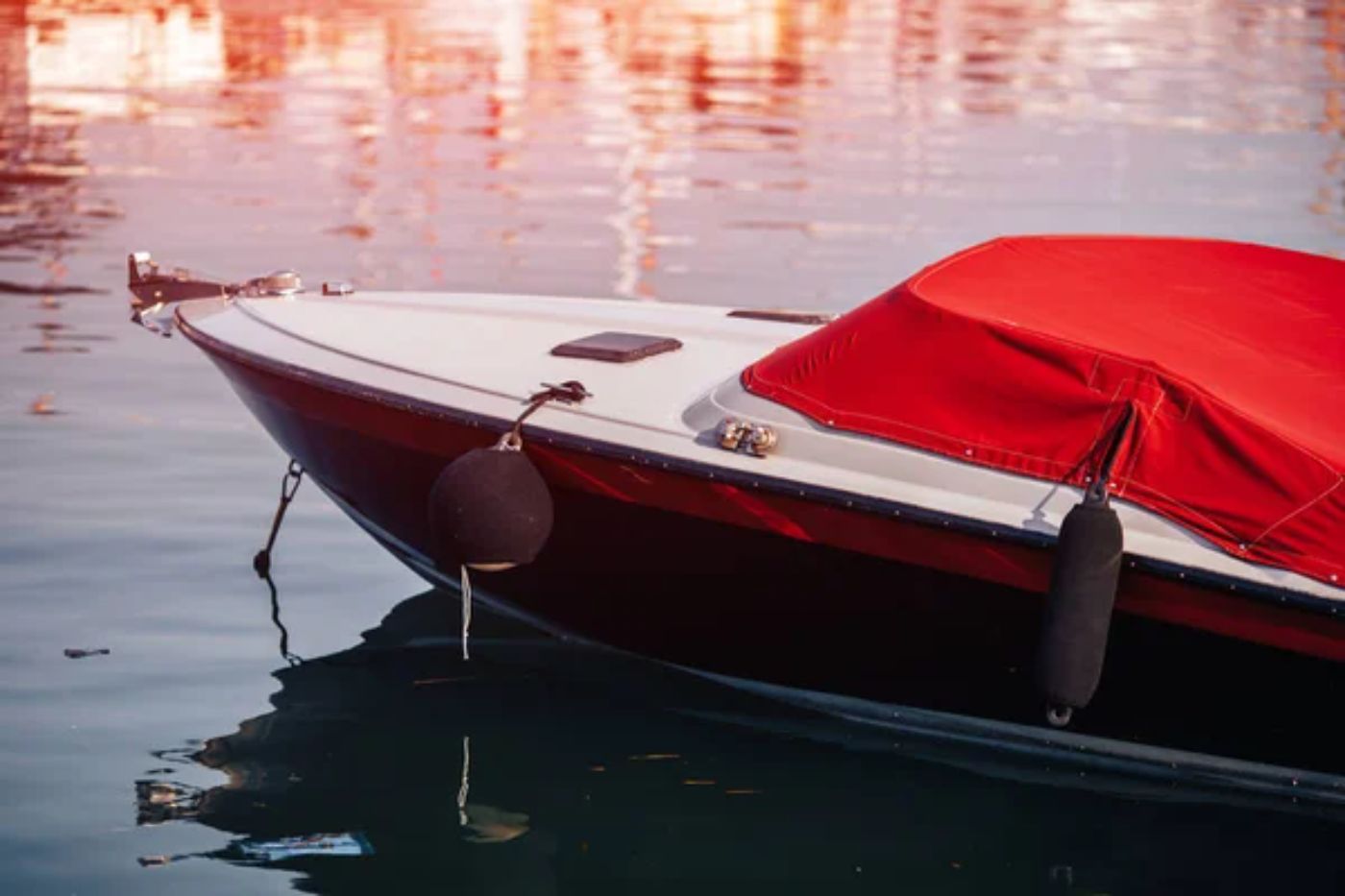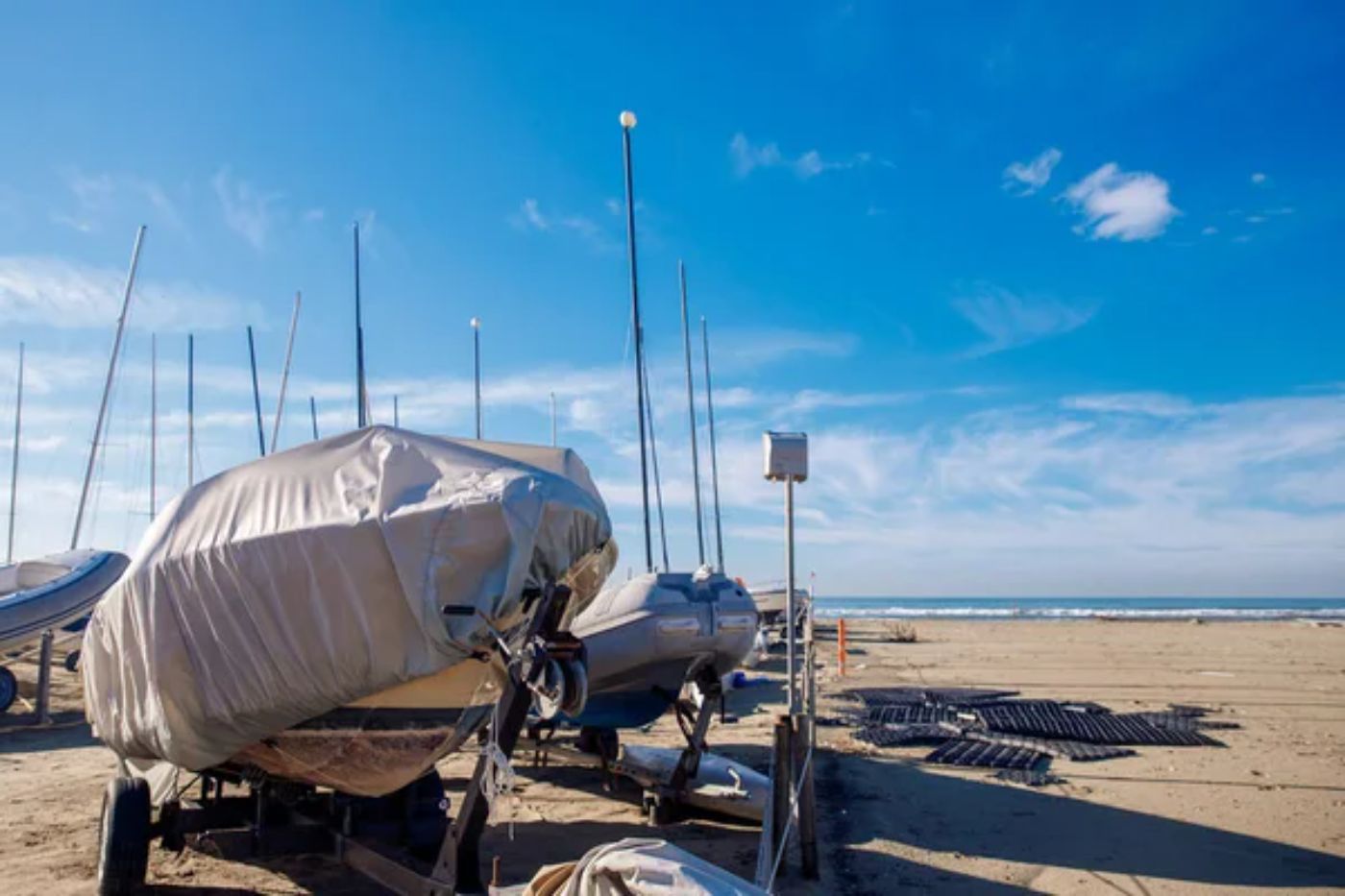How Long Does Boat Winterization Last?
While winterizing your boat can help prevent damage, it is not a guarantee. Some boats may still experience issues if left in storage for an extended period. In this article, we'll explore how long a boat can remain winterized without any issues and what measures you need to take if you leave it for a longer period.
In general, a boat should remain winterized for no more than six months. So if you winterize your boat in October, it should be ready to go by April. However, if you live in a region where winter temperatures are extreme, it is best to shorten this period.
If a boat is left in storage for too long, one of the most obvious negative effects is engine damage, since the antifreeze can break down and lose its effectiveness, leaving the engine vulnerable to freezing temperatures. Let's see the other negative effects on your boat once you leave it winterized for an extended period of time.
Summary
- Smaller boats may only need to be winterized for 3–5 months, while larger boats may need to be winterized for up to 6–7 months.
- The longer a boat remains winterized, the greater the risk of damage due to the breakdown of the antifreeze used in the winterizing process.
- The use of high-quality antifreeze and storing the boat in a climate-controlled environment can extend the duration of winterization.
- Leaving a boat winterized for a year may result in issues such as fuel breakdown, battery failure, electrical system and engine block damage, and oil contamination.
- Leaving it winterized for two years or more can result in various problems like battery damage, engine damage, fuel system damage, hull damage, and interior damage.

The Duration Of Boat Winterization
The table below shows how boat size and the method of winterization affect how long a boat can carry on:
| Type of Boat (Size) | Winterization Method | Estimated Timeframe |
|---|---|---|
| Small boats (less than 20 feet) | Draining engine and adding antifreeze | 3-4 months |
| Small boats (less than 20 feet) | Storing in climate-controlled environment | 4-5 months |
| Mid-sized boats (20-30 feet) | Draining engine and adding antifreeze | 4-5 months |
| Mid-sized boats (20-30 feet) | Storing in climate-controlled environment | 5-6 months |
| Large boats (over 30 feet) | Draining engine and adding antifreeze | 5-6 months |
| Large boats (over 30 feet) | Storing in climate-controlled environment | 6-7 months |
It is generally recommended that a boat should remain winterized for no more than 6 months. This is because the longer a boat remains winterized, the greater the risk of damage to the engine and other systems.

How Long Does it Take to Winterize a Boat on Average?
The reason for this is that the antifreeze used in the winterizing process can break down over time, allowing water to enter the engine and other systems, which can cause damage when it freezes.
A smaller boat with a simpler engine may only need to be winterized for a few months, while a larger boat with a more complex engine may need to be winterized for a longer period of time.

The timeframe for how long a boat should remain winterized can also vary depending on how it was winterized. Here are some examples:
-
If a boat was winterized using a high-quality antifreeze and stored in a climate-controlled environment, it may be able to remain winterized for longer than 6 months without risk of damage.
-
If a boat was winterized using a lower-quality antifreeze or was not properly drained of all water, it may be at risk of damage if left winterized for more than a few months.

Antifreeze to Winterize Your Boat: What & How Much
To ensure that your boat remains protected, you need to follow the manufacturer's recommendations for winterization and storage. You should also inspect your boat regularly during the winter months to ensure that everything is in good condition.
Leaving your boat winterized for a year can cause several issues
The first and most obvious issue is that the fuel in the tank will start to break down, which can lead to clogs in the fuel system and engine damage.
Additionally, the battery may die or lose its charge, and the electrical system may suffer from corrosion or other damage.
Another issue is that the water in the cooling system may freeze and expand, causing damage to the engine block and other parts. The oil in the engine may also become contaminated or break down over time, leading to engine damage or failure.
If you have left your boat winterized for a year, here are some steps you can do to ensure that it is still in good working condition before using it again:
- Check the fuel system: Drain the old fuel and replace it with fresh fuel. Check the fuel lines and filters for clogs or damage.
- Inspect the battery: Check the battery for damage, corrosion, and proper charge. If necessary, replace the battery.
- Check the electrical system: Inspect the electrical system for damage or corrosion. Check all connections and wiring.
- Inspect the cooling system: Check the cooling system for leaks or damage. Replace the coolant if necessary.
- Check the engine oil: Check the engine oil level and condition. If the oil is contaminated or old, replace it.
- Inspect the hull and deck: Check the hull and deck for damage or cracks. Repair any damage before using the boat.
- Test the engine: Start the engine and run it for a few minutes. Check for any unusual noises or vibrations.
Leaving it winterized for two years or more can result in various problems and damage
Here are some things that could happen to a boat left winterized for 2 years or more and what to do if you find yourself in this situation:
| Type of Damage | Possible Causes | What to Do |
|---|---|---|
| Battery damage | Left in the boat and not charged | Replace the battery and check the electrical system for any other damage |
| Engine damage | Seized or corroded due to lack of use | Have a professional mechanic inspect the engine and make any necessary repairs |
| Fuel system damage | Fuel in the tank degraded, causing clogs and damage to the fuel system | Drain and clean the fuel tank and replace any damaged parts |
| Hull damage | Left in water, causing damage from marine growth or debris | Inspect the hull and make any necessary repairs |
| Interior damage | Suffered from mold, mildew, or water damage | Thoroughly clean and dry the interior, and possibly replace any damaged materials |
Regardless of whether it took you a year or two to winterize your boat, here are basic steps to de-winterize it.
The Risks Of Leaving Your Boat Winterized For Too Long

Leaving your boat winterized for an extended period of time can cause several risks such as the following:
Your boat can gradually corrode
When the boat is not in use, moisture can build up inside the engine and other parts, leading to rust and corrosion. This can cause irreversible damage to the boat's engine and other parts, leading to expensive repairs.
Corrosion is a natural process that occurs when metals react with their environment, resulting in the deterioration of the metal and its properties. In the case of boats, corrosion can occur due to exposure to saltwater, moisture, and other environmental factors.
Corrosion can be particularly problematic for boats because it can lead to structural damage and compromise the safety of the vessel. It can weaken the boat's hull, making it more susceptible to leaks and even sinking.
How to prevent boat corrosion
Below are some practical tips to prevent your boat from corroding:
- Clean your boat regularly to remove any salt, dirt, or other contaminants that can cause corrosion. Use mild soap and water to wash the boat's exterior and interior.
- Apply a layer of wax to your boat's exterior to protect it from the elements and prevent corrosion.
- Use anti-corrosion products such as corrosion inhibitors, rust converters, and protective coatings to prevent corrosion.
- Ensure proper ventilation within the boat to prevent moisture buildup, which can lead to corrosion.
- Install sacrificial anodes on your boat's hull and other metal components to protect them from corrosion.
- Regularly inspect and maintain your boat's engine, electrical system, and other components to detect and address any signs of corrosion.
- Store your boat properly during the off-season, such as in a dry, covered area, to prevent exposure to the elements and moisture buildup.
Fuel issues can develop over time
Fuel can break down over time, leading to clogs in the fuel lines and filters. This can cause the engine to fail to start or run poorly, leading to expensive repairs.
In addition to fuel breakdown, when a boat sits unused for an extended period of time, condensation can build up inside the fuel tank. This can lead to water getting into the fuel, which can cause corrosion and other damage to the engine.
How to prevent fuel issues
Here are some tips to prevent fuel issues when leaving a boat winterized for an extended period of time:
- Add a fuel stabilizer to the tank before storing the boat. This will help prevent fuel breakdown and keep the fuel fresh for longer.
- Drain the fuel system before storing the boat. This will remove any old fuel and prevent it from breaking down and causing clogs or other issues.
- Consider removing the fuel from the tank entirely if the boat will be stored for an extended period of time. This will help prevent water contamination and other fuel-related issues.
- Inspect the fuel lines and filters before starting the engine after a long period of storage. This will help identify any clogs or other issues that may have developed while the boat was in storage.
- Use a fuel-water separator to help prevent water contamination in the fuel system. This can help extend the life of the engine and prevent costly repairs.
- Store the boat in a dry, well-ventilated area to help prevent condensation from building up in the fuel tank.
Your battery can lose charge and become damaged
If the boat's battery is not maintained properly during the winter months, it can lose its charge and become damaged. This can cause the boat's electrical system to fail, leading to expensive repairs.

How to prevent battery damage
- Regularly check the battery's water level and add distilled water as needed.
- Clean the battery terminals with a wire brush and a solution of baking soda and water to remove any corrosion buildup.
- Ensure the battery is fully charged before using the boat and recharge it as soon as possible after use.
- Use a battery maintainer or trickle charger during periods of non-use to keep the battery charged and prevent it from losing its charge.
- Disconnect the battery when the boat is not in use for extended periods of time to prevent parasitic drain.
- Keep the battery and its terminals clean and dry to prevent water damage and corrosion.
- Store the battery in a cool, dry place away from direct sunlight and heat sources.
- Consider investing in a high-quality marine battery that is designed specifically for boating use.
- Follow the manufacturer's recommendations for battery maintenance and replacement.
- Regularly inspect the boat's electrical system for any signs of damage or wear and address any issues promptly.
Your boat can become a breeding ground for mold and mildew
Mold and mildew can cause health issues for those who come into contact with the boat and can also damage the boat's interior. Mold and mildew are types of fungi that thrive in warm, damp environments.
Boats are particularly susceptible to mold and mildew growth because they are often stored in humid areas and are constantly exposed to moisture from the surrounding water. When left unchecked, mold and mildew can spread quickly and cause serious health problems for anyone who comes into contact with them.
In addition to health concerns, mold and mildew can also damage the boat's interior, causing discoloration, odors, and even deterioration of the boat's structure.
How to prevent developing mold and mildew in your boat
Below are some preventive tips to avoid mold and mildew growth on your boat:
- Keep your boat clean and dry: Regularly clean all surfaces of your boat, including the hull, deck, and interior. Make sure to dry off any wet surfaces, such as carpets and upholstery, as soon as possible.
- Use a dehumidifier: A dehumidifier can help to remove excess moisture from the air inside your boat, reducing the risk of mold and mildew growth.
- Install ventilation: Proper ventilation can help to circulate air and prevent the buildup of moisture. Consider installing ventilation fans or opening hatches and ports to increase airflow.
- Use mold and mildew inhibitors: There are many products available that are specifically designed to inhibit mold and mildew growth. Use these products on surfaces that are prone to fungal growth, such as carpets, upholstery, and storage compartments.
- Store your boat properly: When not in use, store your boat in a dry, well-ventilated area. If you must store your boat outside, cover it with a breathable boat cover to protect it from the elements.
Your boat can also attract pests such as rodents and insects
Pests can cause damage to the boat's interior and wiring, leading to expensive repairs. They are often drawn to boats because they provide a warm and sheltered environment.
However, once they get inside, they can cause damage to the boat's interior and wiring. Rodents may chew through wires, causing electrical problems, while insects may burrow into wood and cause structural damage. This can lead to expensive repairs and even pose a safety risk if left unchecked.

5 Clever Tips to Keep Mice Out of a Boat Motor

How to prevent pests from entering your boat
To prevent pests from infesting your boat, here are things you need to do:
- Keep your boat clean: Regularly clean and vacuum your boat to remove any crumbs, debris, or other food sources that may attract pests.
- Store food properly: Keep all food in sealed containers or in airtight bags to prevent pests from getting in.
- Seal entry points: Check for any gaps or holes in the boat's exterior and seal them with caulk or mesh to prevent pests from getting in.
- Use pest control measures: Set up traps or use insect repellents to keep pests away from your boat.
- Remove standing water: Pests such as mosquitoes can breed in standing water, so make sure to remove any standing water from your boat.
- Store your boat properly: When not in use, store your boat in a dry, well-ventilated area to prevent moisture buildup and make it less attractive to pests.
Did you find the answer to your specific question?
👍 0 👎 0




Leave a comment